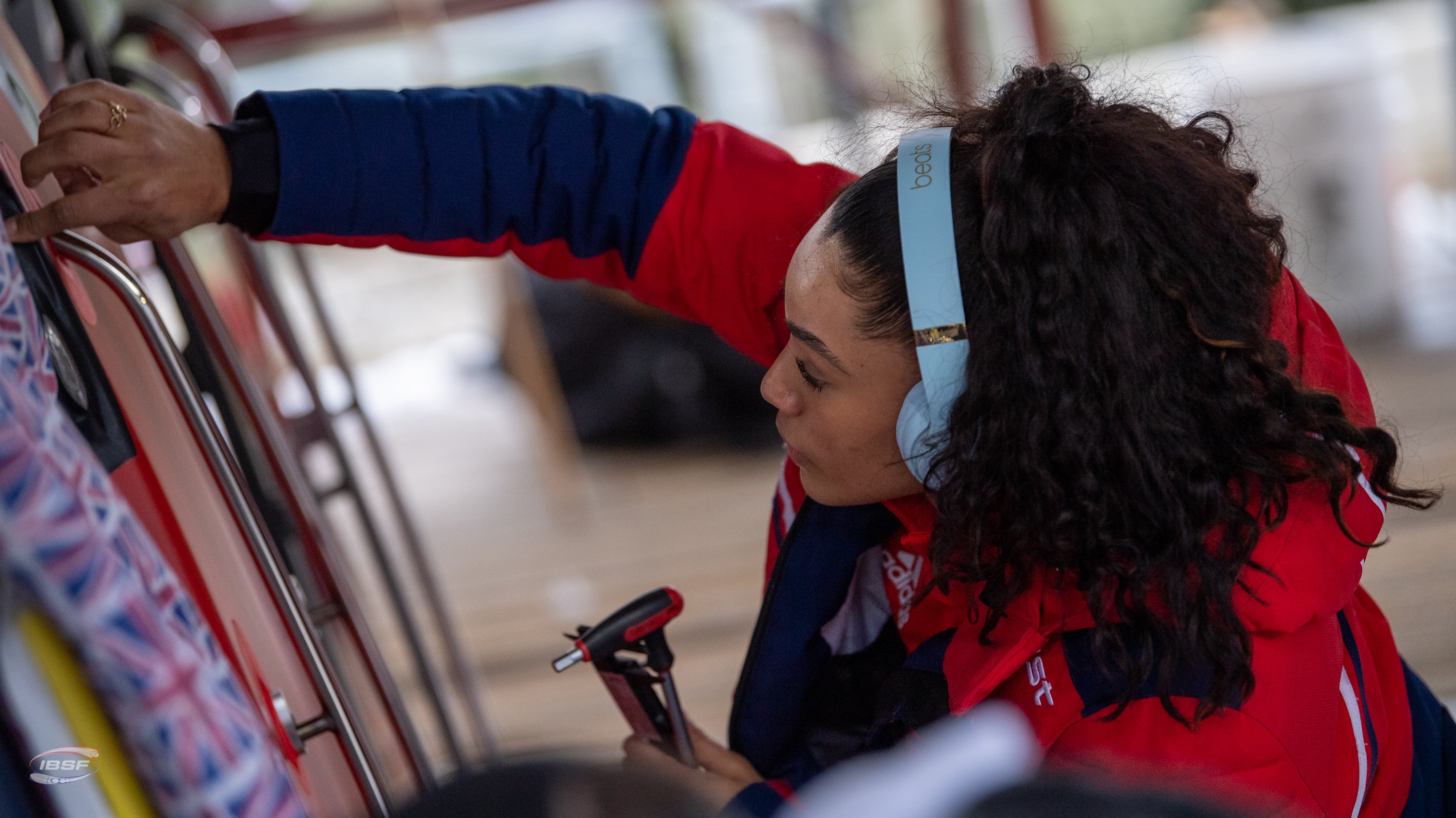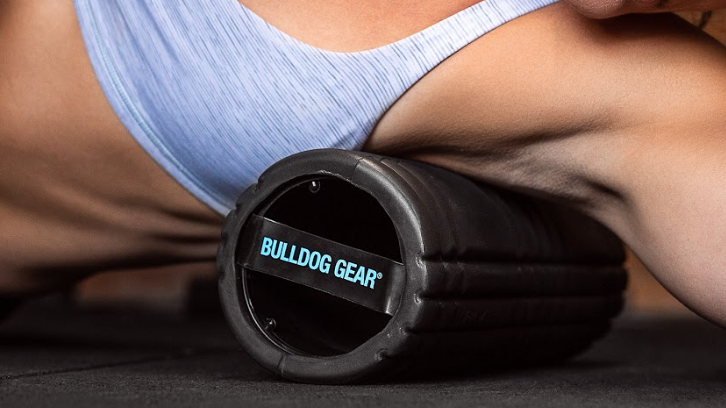|
13/04/2021 | Andrew Tracey Andrew Tracey is a long time collaborator with Bulldog Gear. A coach, writer and current fitness editor of Men’s Health Magazine, he has been in and around the fitness industry for the past 16 years. Having enjoyed and endured a number of disciplines from endurance racing, to strongman, to Crossfit AT enjoys getting neck deep in the practice just as much as the theory. |
Although many people are still on the fence about it’s overall impact, there’s no doubt that one of the most interesting changes to have come in the wake of the COVID-19 pandemic is that many of us now call our homes, offices.
The Office for National Statistics cites that nearly 50% of all people in employment now do some form of work from home, with that number likely to be drastically increased when counting the self-employed.
Although growing concerns over mental health risks cast a dark shadow over this news, it cannot be overlooked that nearly half of us now have drastically more choice over not just where we work, but how.
So with the shackles of mandated break times, seating plans and the nonelective hum of office ambience and lighting lifted- how can we use what know about health and fitness to hack our work from home day?
Here are our top tips for increasing productivity, satisfaction and improving health and well-being, as well as building some cheeky muscle, on the clock.
TAKE A SEAT (OR NOT)
“Sitting is the New Smoking” the pithy quote from Dr. James Levine of the Mayo Clinic gets a lot of airtime whenever a conversation around being desk bound for long periods of the day comes up. But to put it bluntly, it’s bullsh*t.
Whilst sitting for long stretches does correlate with a number of less than savoury effects on the human body, it pales into insignificance when lined up against the 180% increase in risk of premature death that regular smoking carries.
Not to mention the fact that sitting is neither addictive nor a danger to others; no one’s particularly worried about second hand sitting.
So it’s not all bad news if your butt is firmly parked for a decent portion of the day. Even if you want to take a swing at combating the (now diminished) pitfalls of sitting all day, you’re not faced with a simple binary choice of standing versus sitting all day, a 1:1 ratio is ample to largely offset any ill effects. This can be quickly actioned by raising your laptop on a stack of books every other hour, taking meetings standing (or even walking, more on that later).
If organising your day around periods of sitting or standing sounds a little bit too meticulous, one simple hack is to work standing up until lunch, then spend the rest of your afternoon seated, using the midday break as a simple reminder.
WALK THIS WAY
If standing throughout the day can offset your desk bound woes and bring you back up to neutral, then walking can shift you into high gear.
The benefits of short walks throughout your working day are so bountiful that lacing up is a veritable panacea.
Beyond the obvious and arbitrary points that walking burns more calories than sitting and can help to reduce many, if not all of the risks associated with a sedentary lifestyle, short walks also provide a huge boost to your mental health. Increased blood flow and oxygen intake ramps up your cognitive function and the act of ‘ambulation’ or moving forward through space acts on your visual cortex to reduce anxiety (essentially hacking your brain to believe you’re moving away from danger). Add to this that a recent Harvard study found that participants who walked outdoors for periods of time during the day had lower activity in the prefrontal cortex, a brain region that’s often associated with rumination, anxiety and depression.
If you weren’t sold already (and you really should be), short bouts of exercise, even at a low intensity can work wonders on your metabolism, increasing your insulin sensitivity and helping your body to better metabolise calories.
HOLD THE COFFEE
Not indefinitely, we promise— you can keep reading.
If you’re waking up bleary eyed and short on your motivation your first port of call every morning is probably to look for the solution at the bottom of a coffee cup. Sound familiar? But this could actually just be pushing your fatigue further into the day.
Necking your first cup of joe immediately upon waking can interfere with your body’s natural production of the hormone cortisol. Although viewed primarily as a ‘stress hormone’, cortisol is also responsible for increasing your alertness; by doubling down on this with a huge jolt of caffeine we’re not only working against cortisol’s alertness effect, we’re also blunting the effect of the caffeine, and worse still increasing our tolerance to it, meaning we’ll need ever increasing doss in the long run to harness the same sweet, sweet buzz.
To get the most bang for your buck from your barista blend, wait between 1-2 hours after waking before your first cup.
EAR CANDY
There’s nothing wrong with listening to your favourite beats whilst working, in fact not having to surrender your ears to the communal playlist every day may well be the best thing to have come out of your WFH transition.
With that being said, if you’re open to a little experimentation science may have some better options.
‘Binaural beats’ create an auditory illusion by playing two slightly different frequencies simultaneously into either ear through headphones. Your brain reinterprets the two tones as a beat of it’s own, and through the ‘frequency-following effect’ your brain activity subtly alters to match the new frequency, essentially giving you the ability to coax your mind into producing a certain mental state.
Whilst many different states can be achieved using a variety of frequencies, a good rule of thumb is that lower frequencies (known as Delta and Theta, between 1- 8hz) are ideal for relaxation, stress relief and achieving a meditative state; whilst Alpha, Beta and Gamma frequencies (ranging from 8-100hz) are geared towards focus, productivity and creativity.
Although research is scant at the moment, many researchers believe that listening to Gamma waves at around 40hz, for 30 minutes prior to a deep work dive, or during, can increase your memory, help lateral thinking and problem solving and aid in staying focussed in the task.
Binaural beats are available freely via streaming platforms and YouTube.
WORK, REST, REPEAT
Energy goes where attention flows. Trying to maintain high energy levels with a wandering attention span is like trying to fill a sieve with water. The low hanging fruit of increasing your energy levels is simply to focus the energy you do have in the right direction, with strategic bursts of work, followed by short bouts of rest.
Think of it as interval training for productivity.
The ‘Pomodoro Technique’ is a time management system that formalises and optimises this principle.
The concept is simple, set a timer for 25 minutes and remove all distractions, until the bell rings focus single-mindedly on nothing but the task at hand.
At the 25 minute mark, even if you’re mid sentence, get up and take a 5 minute break; go for a quick walk, spread your legs, stare out of a window at something in the middle distance to refresh your eyes, grab a drink. Once the 5 minute marks hits, repeat the process with another 25 minute work/ 5 minute rest ‘block’.
After 4-5 Pomodoro ‘rounds’, take a longer break of 20 minutes to an hour.
This technique of small manageable ‘chunks’ of work can not only help you stay on task, but can help massively to avoid feelings of overwhelm related to larger, seemingly never ending tasks.
By focusing on one task or project at a time, we can focus our full efforts in one direction, avoiding the fatigue of feeling spread across multiple tasks, leaving you feeling energised throughout the day.
REPS ON THE CLOCK
Predictably we couldn’t go one article without talking about sweet, sweet gains, but we promise— we’re going somewhere with this, and not just to Gainsville.
Short, moderately intense bouts of exercise throughout the day won’t just result in increased fitness, muscle growth and a decrease in poor health markers, but they could also be the tie that binds nearly all of the above points together.
For instance, setting an alarm for the top of each hour of your working day and pausing briefly to perform 5-10 minutes of a short circuit, won’t just rack up a huge amount of muscle building volume without the associated fatigue of a longer session— it will also increase your blood flow, move your joints and muscles through a full range of motion and offset many (if not all) of the major pitfalls of spending all day chained to your desk.
In the short term you’ll also increase your motivation and productivity as your brain releases a cascade of feel good hormones to catapult you through the rest of the hour, in the long term through the release of ‘BDNF’ or brain-derived neurotrophic factor you’ll be future proofing your brain, helping to protect it from neurodegenerative diseases like Alzheimer's and Parkinson's Disease.
On a personal note, I truly believe high rep kettlebell swings are an absolute deus ex machina when deployed in this fashion— swooping in and targeting your hips, glutes and postural muscles of your upper back to deliver a devastating blow to the dangers of desk-slavery. A ten minute EMOM of just 5-10 reps each minute, perhaps interspersed with another movement of particular interest to you (*cough* curls *cough*) can see you clocking up hundreds of reps throughout the day, all whilst improving your productivity and sense of wellbeing.



